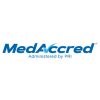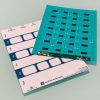Q: Upper Management is becoming increasingly concerned about the cost pressures we are seeing in the market. They have asked me to look at our manufacturing process and determine where we can reduce cost. They want me to look at not just the inputs (i.e., materials), but also to focus on the manufacturing process and the outputs (i.e., scrap, waste stream, etc.). I know we may have areas of scrap with the use of our solvents (drip marks, leaks, etc.), but we have never really measured that or looked into it because the cost of solvents is so low. How can I begin to look at the total cost of using solvents and determine if there are lower-cost solutions than solvent?
A: In a solvent assembly process, there often are areas of hidden costs:
- Scrap due to drip marks, leaks, stress cracking;
- Long dry times leading to work in process in production and prior to QC;
- Assembled materials needing tight tolerances; Medical exams for the operators who handle the solvents; and
- Extraction equipment for the HVAC systems and disposal of the solvent.
With an adhesives solution (which is initially more costly than a solvent), you can eliminate all those issues (cost drivers) and end up with an overall lower-cost process that is more efficient and better in quality.
Henkel has developed innovative solutions for these types of applications. The adhesive technologies commonly used are Light Cure Acrylics (LCAs) and Instant Adhesives (Cyanoacrylates, or CAs). These products offer fast cure (seconds), the ability to bond and seal, and the capability to bond dissimilar materials, and they don’t require a press fit (they can cure through gaps). Henkel has developed fast-curing LCAs that can be QC’d right on the production line for presence and degree of cure. These products cure within seconds and are QC’d in milliseconds. Henkel has also developed CAs with a 250 percent increase in flexibility, which is useful when assembling flexible materials (like tubing).
Q: The Medical Device Industry is under pressure to become more sustainable. Not only sustainable in energy usage and waste, but in the materials we are working with so that products can be recycled without harming the environment. I have been asked to lead my company’s sustainability initiative in the manufacturing setting. The areas I am focusing on include eliminating the use of PVC with DEHP (harmful leachables; harmful when incinerated), and eliminating the use of solvents (harmful to operators; waste-disposal risks; scrap production). What solutions can I look at to address these areas of concern?
A: When companies are facing Sustainability Initiatives that involve using safer materials, Henkel has adhesives solutions that can accommodate bonding these new alternatives. Henkel Medical Adhesives can bond any substrate presented, with or without treatment. Henkel can also offer our solutions as raw materials to be added to other components to create a finished good that can be extruded into films and tubing that are safer for use and disposal.
Most recently Henkel has developed innovative solutions that offer sustainability in terms of reducing scrap. These technologies can be QC’d right on the production line after assembly, reducing the risk of having to scrap a part further down the production line. These technologies include Light Cure Acrylics (LCAs) and Instant Adhesives (Cyanoacrylates, or CAs). These products offer fast cure (seconds), the ability to bond and seal, the capability to bond dissimilar materials, and they don’t require a press fit (they can cure through gaps). Henkel has developed fast curing LCA’s that can be QC’d right on the production line for presence and degree of cure. These products cure within seconds, and are QC’d in milliseconds. Henkel has also developed CA’s with a 250% increase in flexibility which is useful when assembling flexible materials (like tubing).





